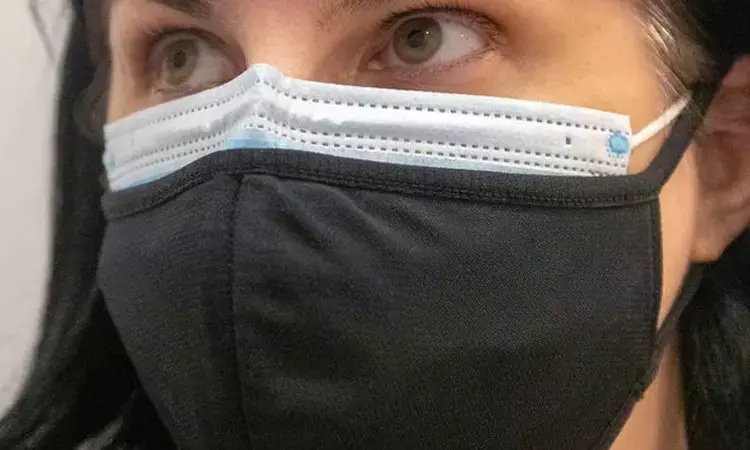- Home
- Medical news & Guidelines
- Anesthesiology
- Cardiology and CTVS
- Critical Care
- Dentistry
- Dermatology
- Diabetes and Endocrinology
- ENT
- Gastroenterology
- Medicine
- Nephrology
- Neurology
- Obstretics-Gynaecology
- Oncology
- Ophthalmology
- Orthopaedics
- Pediatrics-Neonatology
- Psychiatry
- Pulmonology
- Radiology
- Surgery
- Urology
- Laboratory Medicine
- Diet
- Nursing
- Paramedical
- Physiotherapy
- Health news
- Fact Check
- Bone Health Fact Check
- Brain Health Fact Check
- Cancer Related Fact Check
- Child Care Fact Check
- Dental and oral health fact check
- Diabetes and metabolic health fact check
- Diet and Nutrition Fact Check
- Eye and ENT Care Fact Check
- Fitness fact check
- Gut health fact check
- Heart health fact check
- Kidney health fact check
- Medical education fact check
- Men's health fact check
- Respiratory fact check
- Skin and hair care fact check
- Vaccine and Immunization fact check
- Women's health fact check
- AYUSH
- State News
- Andaman and Nicobar Islands
- Andhra Pradesh
- Arunachal Pradesh
- Assam
- Bihar
- Chandigarh
- Chattisgarh
- Dadra and Nagar Haveli
- Daman and Diu
- Delhi
- Goa
- Gujarat
- Haryana
- Himachal Pradesh
- Jammu & Kashmir
- Jharkhand
- Karnataka
- Kerala
- Ladakh
- Lakshadweep
- Madhya Pradesh
- Maharashtra
- Manipur
- Meghalaya
- Mizoram
- Nagaland
- Odisha
- Puducherry
- Punjab
- Rajasthan
- Sikkim
- Tamil Nadu
- Telangana
- Tripura
- Uttar Pradesh
- Uttrakhand
- West Bengal
- Medical Education
- Industry
Double masking enhances filtration and improves protection from COVID-19: JAMA

In a study published today in JAMA Internal Medicine shows that wearing two face coverings can nearly double the effectiveness of filtering out SARS-CoV-2-sized particles, preventing them from reaching the wearer's nose and mouth and causing COVID-19. The reason for the enhanced filtration isn't so much adding layers of cloth, but eliminating any gaps or poor-fitting areas of a mask.
The medical procedure masks are designed to have very good filtration potential based on their material, but the way they fit our faces isn't perfect," said Emily Sickbert-Bennett, PhD, associate professor of infectious diseases at the UNC School of Medicine and lead author of the study.
To test the fitted filtration efficiency (FFE) of a range of masks, UNC researchers worked with James Samet, PhD, and colleagues in the USEPA Human Studies Facility on the campus of UNC-Chapel Hill. There they filled a 10-foot by 10-foot stainless-steel exposure chamber with small salt particle aerosols, and had researchers don combinations of masks to test how effective they were at keeping particles out of their breathing space.
Each individual mask or layered mask combination was fitted with a metal sample port, which was attached to tubing in the exposure chamber that measured the concentration of particles entering the breathing space underneath the researcher's mask. A second tube measured the ambient concentration of particles in the chamber. By measuring particle concentration in the breathing space underneath the mask compared to that in the chamber, researchers determined the FFE.
"We also had the researchers in the chamber undergo a series of range-of-motion activities to simulate the typical motions a person may do throughout their day -- bending at the waist, talking, and looking left, right, up and down," said Phillip Clapp, PhD, an inhalation toxicologist in the UNC School of Medicine who has been testing mask FFE with Sickbert-Bennett since the pandemic began.
According to their findings, the baseline fitted filtration efficiency (FFE) of a mask differs person to person, due to each person's unique face and mask fit. But generally, a procedure mask without altering the fit, is about 40-60% effective at keeping COVID-19-sized particles out. A cloth mask is about 40% effective.
Their recent findings on doubling of face masks, shows that when a cloth mask is placed over a surgical mask, the FFE improved by about 20%, and improved even more with a snug-fitting, sleeve-type mask, such as a gaiter. When layered over procedure masks, cloth masks improve fit by eliminating gaps and holding the procedure mask closer to the face, consistently covering the nose and mouth. When a procedure mask is worn over a cloth mask, FFE improved by 16%.
"We've found that wearing two loosely fitted masks will not give you the filtration benefit that one, snug-fitting procedure mask will," Sickbert-Bennett said. "And with the current data supporting how effective mask-wearing is at preventing the spread of COVID-19, the best kind of double-masking is when you and the person you are interacting with are each correctly wearing a very snug-fitting mask."
This study was partially funded by a grant from the Centers for Disease Control and Prevention (CDC), and expands upon research conducted by the agency earlier this year, which supported the CDC's recommendation of double-masking to the public. Sickbert-Bennett and Clapp have previously discussed this recommendation and their research on the importance of mask fit with news outlets in a recorded conversation
https://jamanetwork.com/journals/jamainternalmedicine/fullarticle/2778913
Hina Zahid Joined Medical Dialogue in 2017 with a passion to work as a Reporter. She coordinates with various national and international journals and association and covers all the stories related to Medical guidelines, Medical Journals, rare medical surgeries as well as all the updates in the medical field. Email: editorial@medicaldialogues.in. Contact no. 011-43720751
Dr Kamal Kant Kohli-MBBS, DTCD- a chest specialist with more than 30 years of practice and a flair for writing clinical articles, Dr Kamal Kant Kohli joined Medical Dialogues as a Chief Editor of Medical News. Besides writing articles, as an editor, he proofreads and verifies all the medical content published on Medical Dialogues including those coming from journals, studies,medical conferences,guidelines etc. Email: drkohli@medicaldialogues.in. Contact no. 011-43720751


